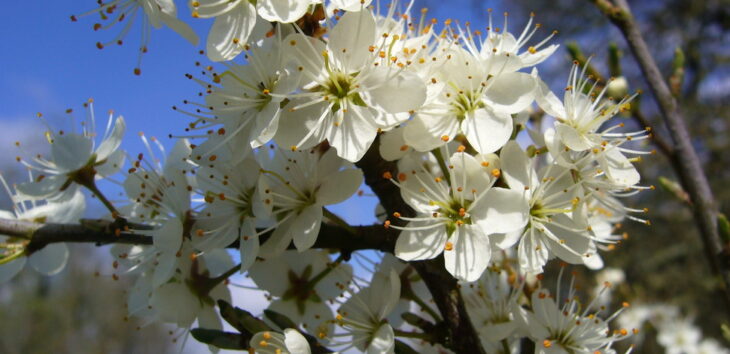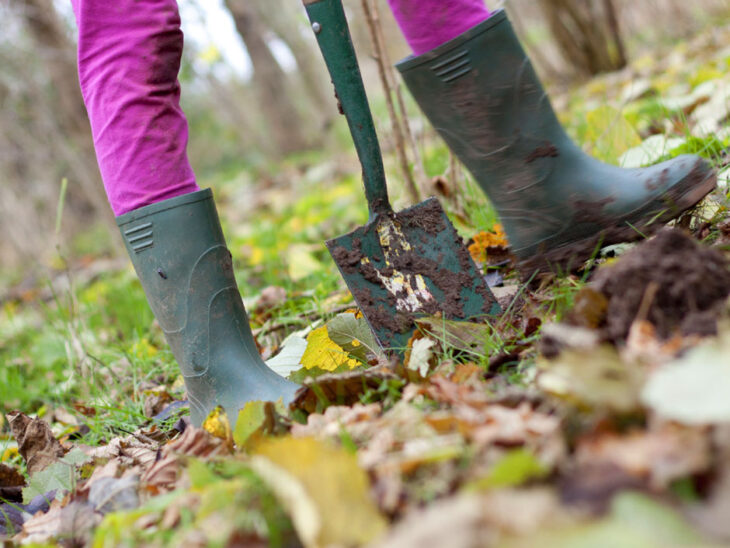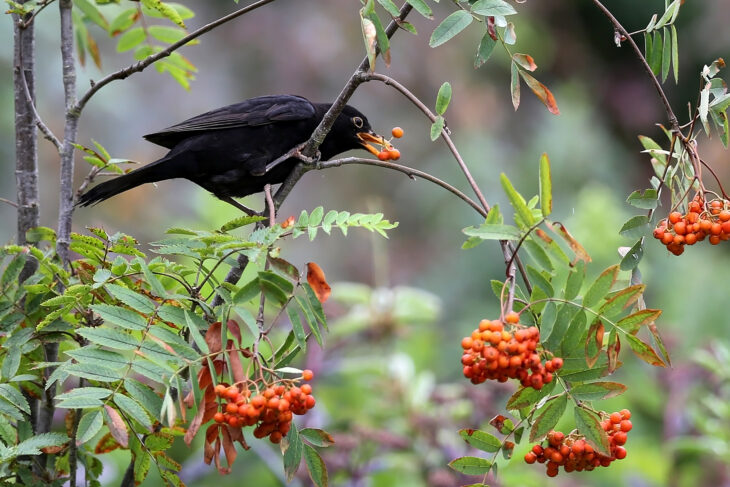One of the best ways to reduce your carbon footprint and encourage wildlife into your garden is by planting trees. Trees are used by many different types of wildlife as a space to breed, shelter and hibernate. They can also provide food for birds, insects and small mammals – amazingly, a single silver birch tree can support more than 300 different insect species, from aphids to ladybirds.
Just six native trees will absorb and store about a tonne of carbon dioxide over their lifetimes. Planting trees also helps to guard against soil erosion, reduces the effects of flooding and absorbs air pollution.

What you will need:
- A young tree
- A spade or shovel
- Some peat-free compost (optional)
- Watering can or hose
Before you plant
Choosing where to plant – Make sure your tree will have enough space to grow by creating a space for it beforehand. In general, you should try to plant your tree at least the equivalent of its mature height away from buildings. If the area you have chosen is overgrown, cut back the vegetation and weed the area. This is so that the roots have room to grow. Remember: if branches or roots damage someone else’s property, you could be liable for the damage.
Choosing when to plant – The best time to plant your tree is between October and April when the roots are dormant. Planting during these months works best if your seedling is 60-90cm tall.
Choosing your tree – Deciding what kind of tree you would like to plant depends upon the size of the space you have chosen for it. Native trees grown local to your area will usually grow best and create the greatest benefit for wildlife. Check out the list below for some of Scotland’s native trees and shrubs, as well as an estimate of their maximum size.
How to plant your tree:
Step 1: Dig a hole. The hole should be at least twice the width and a little deeper than the root ball. Loosen the soil around the edges and at the bottom of the hole. If your tree is quite thin or exposed it may need a little more support, so put a metre-long stake firmly into the ground next to where you intend to plant your tree, on the side that will usually face the wind.

Step 2: Put your tree in the hole. There should be a mark on your tree’s stem that marks where the roots end and the stem begins. This mark should be level with the top of the soil. Try to keep your tree in the centre of the hole and spread the roots out around it.
Step 3: Add the soil back into the hole. You may wish to mix the topsoil from the hole with a little compost before replacing it back into the hole. Try to make sure that there are no air pockets between the roots, as this can lead to the roots rotting. For the same reason, do not leave any roots exposed to the air above ground. Compact the soil around the tree and gently tug it to make sure it is secure. Generously water the area around your tree. If you are using a stake to stabilise your tree, tether the tree to it.
Step 4: Look after your tree. You should water your tree once a week while it has leaves if it is sunny or hot. Regularly check the soil around your tree to make sure it is still secure and remove any growths that rise from the roots. If you are using a stake, you will need to loosen the tether so that it does not cut into your tree. The stake can be removed after three years.

Native tree species and sizes:
Small trees:
- Blackthorn – Prunus spinosa – 6-7m
- Broom – Sarothamnus scoparius – 2m
- Gorse – Ulex europaeus – 2.5m
- Guelder Rose – Virbunum opulus – 4m
- Eared Willow – Salix aurita – 3m
- Purple Willow – Salix purpurea – 4-8m
Medium trees:
- Crab apple – Malus sylvestris – 10m
- Elder – Sambucus nigra – 15m
- Hawthorn – Crataegus monogyna – 15m
- Hazel – Corylus avellana – 12m
- Holly – Ilex aquifolium – 15m
- Common juniper – Juniperus communis – 10m
- Rowan – Sorbus aucuparia – 15m
- White beam – Sorbus aria – 15m
- Bay willow – Salix pentandra – 18m
- Goat willow – Calix caprea – 10m
- Grey willow – Salix cinerea – 10m
Large trees:
- Common alder – Alnus glutinosa – 28m
- Ash – Fraxinus excelsior – 35m
- Aspen – Populus tremula – 25m
- Downy birch – Betula pubescens – 30m
- Silver birch – Betula pendula – 30m
- Bird cherry – Prunus padus – 25m
- Wild cherry – Prunus avium – 30m
- Wych elm – Ulmus glabra – 30m
- Sessile oak – Quercus petraea – 40m
- Common oak – Quercus robur – 40m
- Scots pine – Pinus sylvestris – 35m
- White willow – Salix alba – 25m
